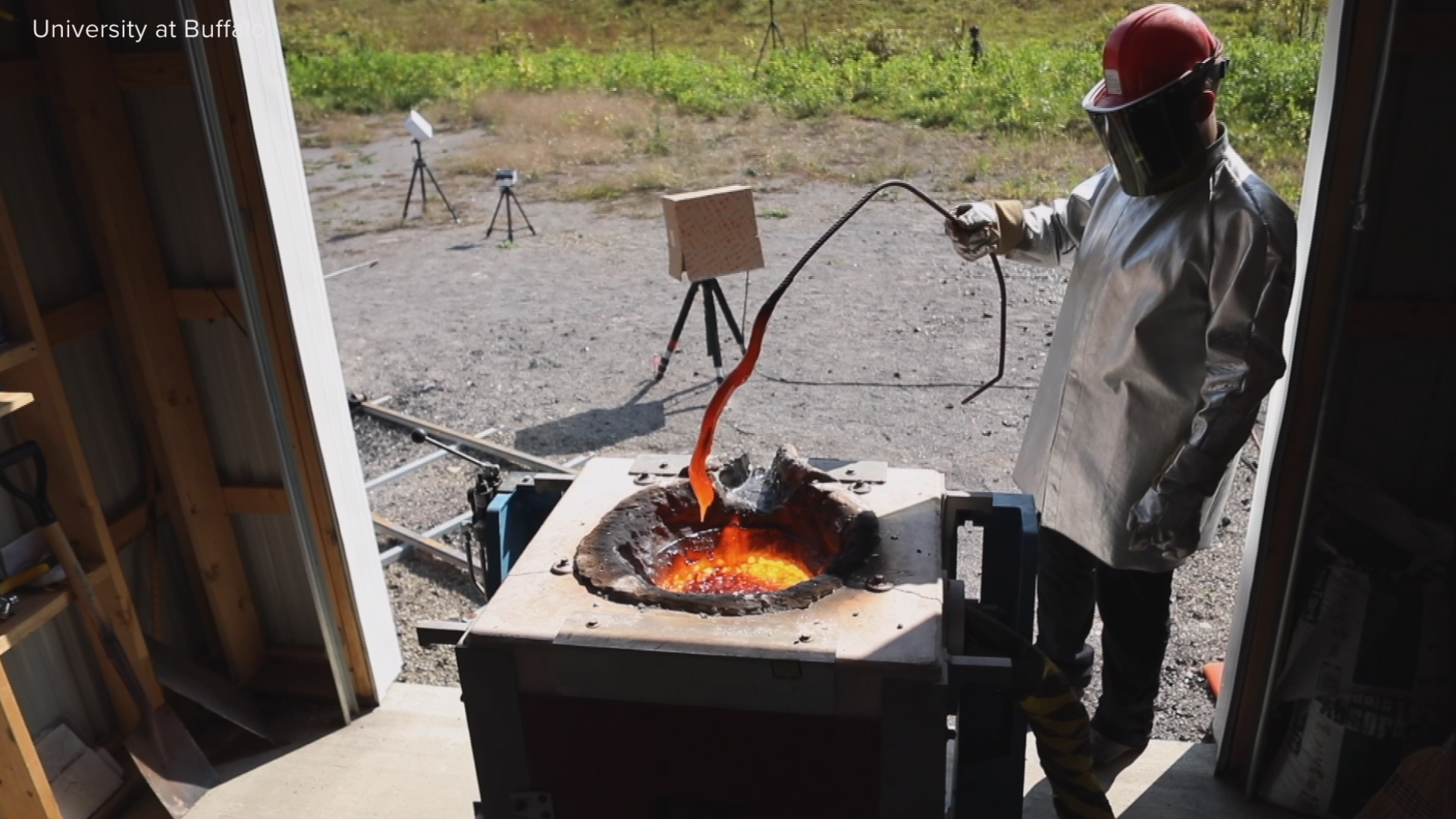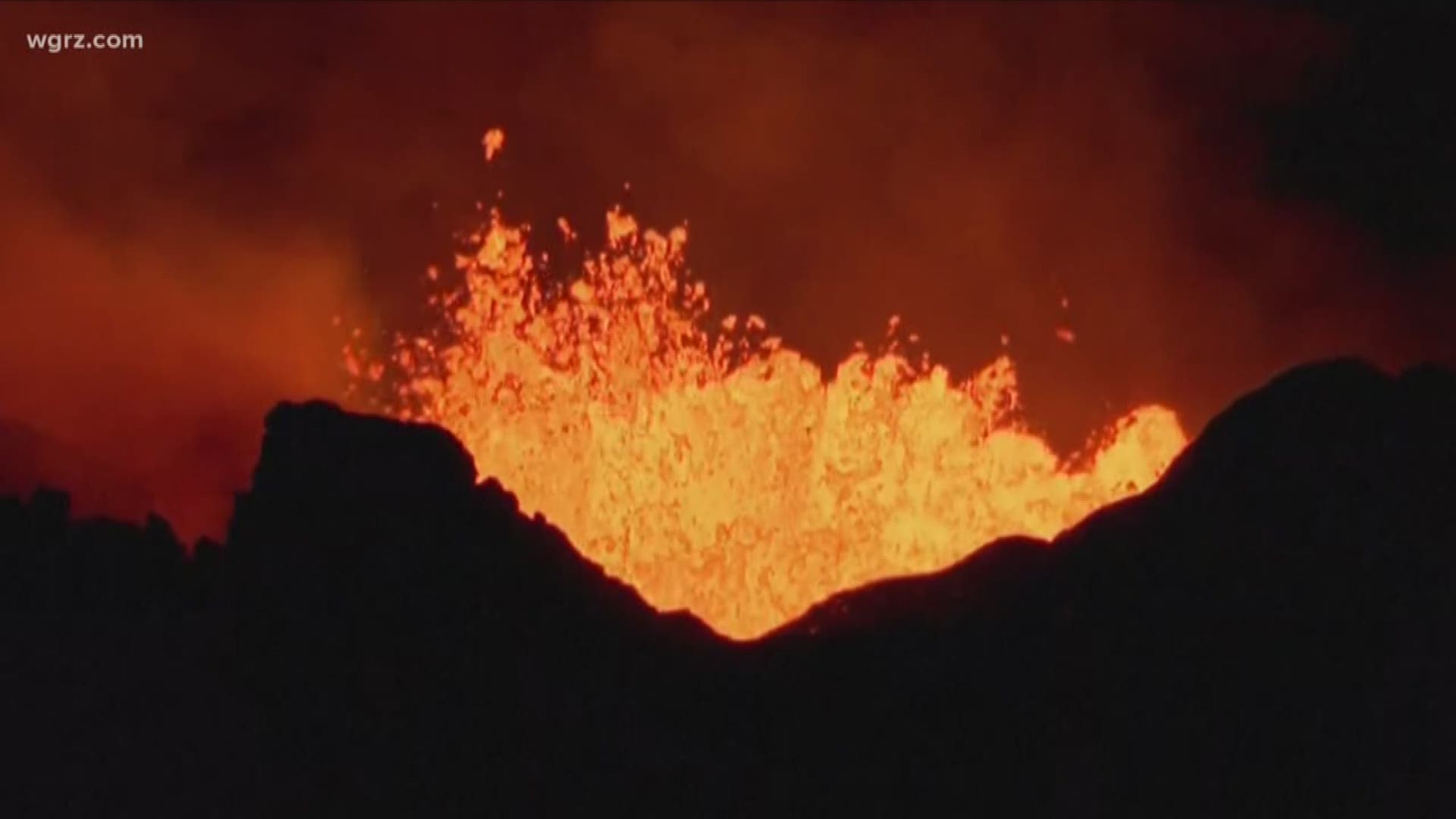UB Scientists Blowing Up Homemade Lava to Better Understand Volcanic Eruptions
The research is happening at a test site in Ashford in Cattaraugus County.

Cattaraugus County is probably one of the last places you think of when you hear the word volcano, but scientists and volcanologists are doing important work there to get a better idea of why some eruptions and explosions are more dramatic than others.
The University at Buffalo's Center for Geohazards Studies is building on decades worth of experiments and research data with their own experiment — brewing homemade lava and then blowing it up.
The goal is to better understand why magma and water sometimes react violently when mixed while other times the result is more subdued.
Lava Bombs Unpredictable Explosions
In July 2018, a volcanic explosion in Hawaii sent a basketball-sized "lava bomb" into a tour boat, injuring nearly two dozen people. The explosion stemmed from ongoing eruptions at Kilauea that started months earlier.
"For weeks or months, nothing happened. Then we had this one incident where we had this major explosion," said Ingo Sonder, research assistant professor at UB.
But why?
Recipe for (Natural) Disaster Violent Combinations
When molten rock and water mix, violent reactions can sometimes occur.
Sonder and his team found that when there's more molten rock above the point where water mixes in, there are a greater number of spontaneous reactions.
The faster the water and magma mixed, the bigger the reaction, according to the team's research.
They say more work needs to be done before they can come to any firm conclusions about the varying reactions.
Thousands of Miles Away Research in WNY
If you're wondering why the researchers aren't doing their work at an actual volcano, the answer is simple: control.
They need a controlled, reliable environment for experiments and must be able to recreate specific conditions. The reason for their research is because volcanic conditions are far from stable and consistent.
The test area allows the scientists to test each individual factor, including temperature, speed, amount of molten rock, and intensity.
UB's Center for Geohazards Studies has several volcanologists on staff.
Volcano Explosion Simulation Recreating the Real Deal
The team ran a total of 12 experiments, each using 10-gallon batches of man-made lava.
They used a high-powered furnace to melt down volcanic rock mined from ancient lava flows in Texas. It takes about four hours to heat the mixture to 2,400 degrees Fahrenheit. From there, it's poured into an insulated steel box.
The scientists get to a safe place, and then use computers to program the next moves.
Streams of water are injected at different speeds, amounts, and locations. Then a hammer drives a plunger into the molten mixture to help stimulate an explosion.
What's Next? More Testing Ahead
Sonder's ultimate goal is to better predict when volcanic activity might be more dangerous and therefore be able to better protect people living near the danger zone.
More testing and research is still needed, so there may be more "explosions" in Cattaraugus County soon.
The project is long-term and ongoing and funded mainly by the National Science Foundation.


